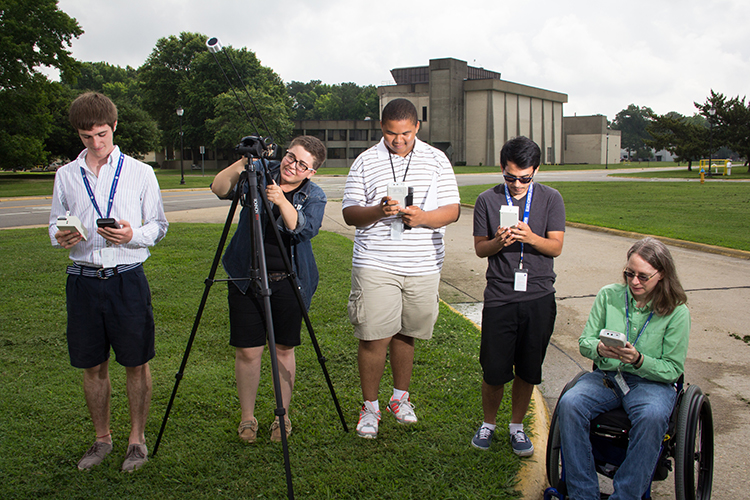TEMPO Public Outreach
TEMPO Education, Communications, and Public Engagement
As part of NASA's overall portfolio of STEM education efforts, and in order to provide societal benefits that maximize the impact of its scientific mission, the TEMPO project is implementing a focused set of education, communications, and public engagement activities. As the TEMPO project evolves, check back as we develop new opportunities for teacher, student, and public audiences to join the TEMPO teams efforts to better understand our home planet.
TEMPO Ozone Garden Network
The TEMPO mission is building a network of museums and public gardens across the country that will engage learners in hands-on activities and develop their citizen science skills, enabling them to contribute quantitative and qualitative data on local air quality impact to the overall scientific community. A prototype ozone garden exhibit was established at the Virginia Living Museum (VLM) in partnership with NASA Langley, and has served as a site to formatively evaluate garden planting and exhibit display protocols, hands-on interpretive activities, and citizen science data collection.
Learn about TEMPO, Air Pollution, and Atmospheric Chemistry
- Watch a public talk by TEMPO Principal Investigator Kelly Chance of the Smithsonian Astrophysical Observatory
Dr. Chance presented this talk in 2013 as part of the Smithsonian Consortia Castle Lecture Series. The unifying theme for this lecture series was "Living in the Anthropocene: Planet Earth in the Age of Humans". - View Air Quality: A Tale of Three Cities
Bryan Duncan, deputy project scientist for NASA's Aura Mission (a precursor to TEMPO), describes the dynamic nature of air quality using three case studies: Beijing, Los Angeles, and Atlanta. - Read about how Remote Sensing Provides a Global Perspective on Air Quality
http://earthobservatory.nasa.gov/Features/AirQuality/
This excellent article is from NASA’s Earth Observatory website, a great place to discover NASA's research on Earth systems. - Explore Earth's changing Atmosphere
http://forces.si.edu/Atmosphere/
Check out this online exhibit from the Smithsonian's National Museum of Natural History. The web site was funded by NASA and TEMPO collaborators from NASA's Aura Mission contributed to its content. - Take a NASA Know Your Earth quiz!
http://climate.nasa.gov/quizzes/air-we-breathe-quiz/
Our atmosphere is vital to all living things on our planet. How much do you know about the air we breath? This quiz is one of many from NASA's Earth Right Now resource collection.
Explore NASA Earth Science Data
- Download NASA's EYES on the EARTH Interactive Visualization software
http://eyes.nasa.gov/earth/
Learn about all the NASA satellites that are collecting important data about Earth's atmosphere, land and oceans. - Interactively browse near-real-time satellite data with NASA's Worldview
https://earthdata.nasa.gov/labs/worldview/
This online application lets you explore global satellite imagery within hours of it being acquired.
Participate in authentic research experiences with NASA Earth Science
- Global Learning and Observations to Benefit the Environment (GLOBE)
http://www.globe.gov/
Join this worldwide community of students, teachers, scientists, and citizens working together to better understand, sustain, and improve Earth's environment at local, regional, and global scales. - My NASA Data
https://mynasadata.larc.nasa.gov/
Optimized for students, teachers, and citizen scientists, this easy-to-use interface lets you view over 200 Earth science parameters and offers over 120 ready-to-use lessons and activities for learning and teaching with NASA data. - S’COOL—Student Cloud Observations On-Line
http://science-edu.larc.nasa.gov/SCOOL/
Students and other Citizen Scientists can make cloud observations and provide ground truth measurements that help to validate the data from NASA satellites investigating Earth’s atmosphere. Report your data and compare it with data from overpassing satellites.
